by GardenLover | Nov 12, 2014 | Favorite Flora
An ancient flower wows modern gardeners
See what modern mums have to offer
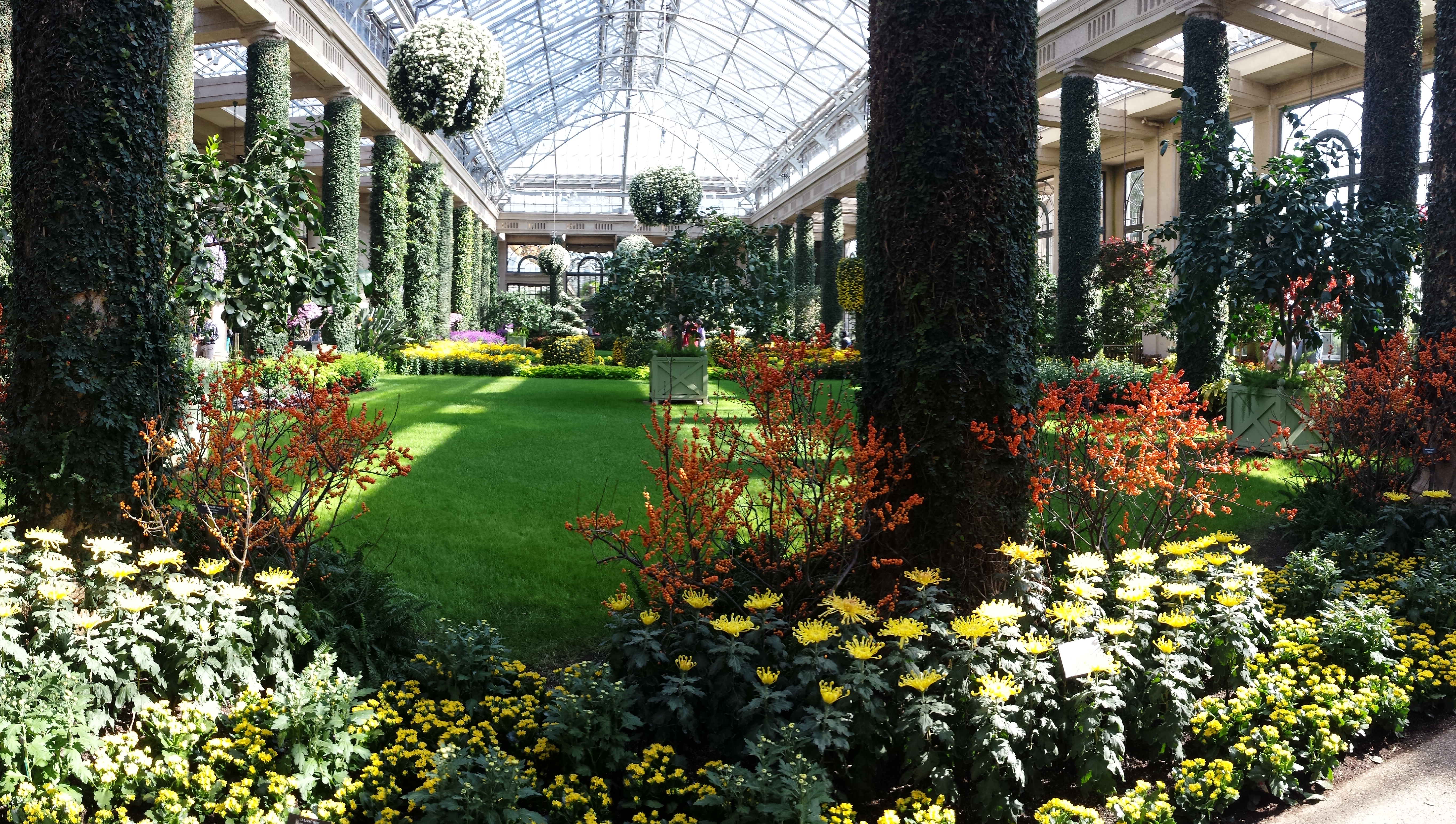 “If you would be happy for a lifetime, grow Chrysanthemums.” (A Chinese philosopher)
“If you would be happy for a lifetime, grow Chrysanthemums.” (A Chinese philosopher)
By Teresa Woodard
This Chinese philosopher certainly would smile if he saw how widespread these “mums” have become as the darling of today’s fall floral displays. In fact, I recently was one of thousands visiting the popular Chrysanthemum Festival at Longwood Gardens in Kennett Square, Pa. Inside Longwood’s four-acre conservatory, more than 80,000 chrysanthemum blooms are nurtured and trained into inspiring forms, including shields, spirals, cascades, balls, and even a 10-foot tall yellow chandelier. 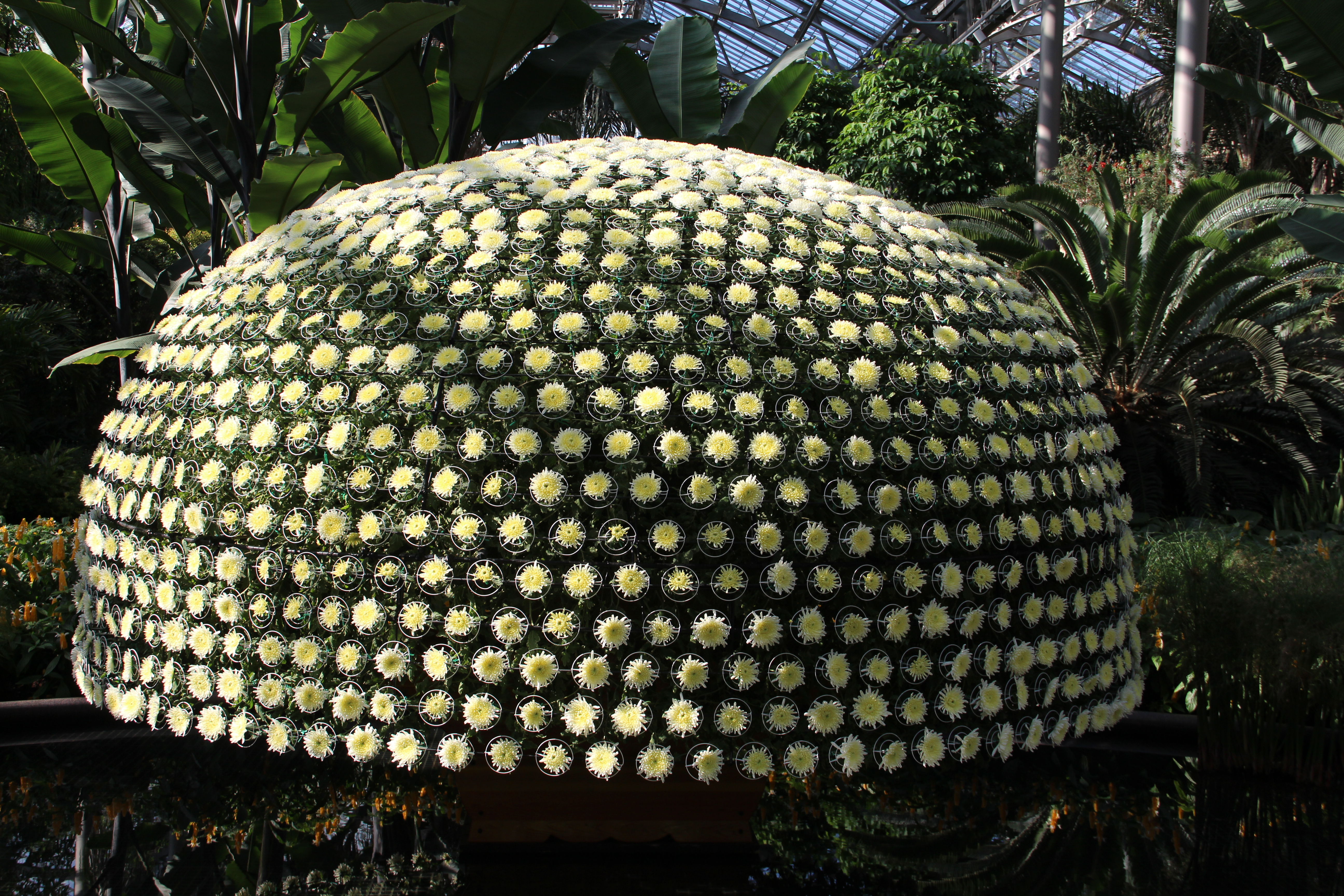 The crown jewel of the display was the Thousand Bloom Mum—featuring more than 1,500 perfectly arranged flowers—the largest of its kind grown outside of Asia.
The crown jewel of the display was the Thousand Bloom Mum—featuring more than 1,500 perfectly arranged flowers—the largest of its kind grown outside of Asia.
Gaining more respect for this mass-marketed fall favorite, I recently visited the National Chrysanthemum Society’s website to learn more about this plant’s rich history. Check out these fun facts:
- First Mum — The chrysanthemum was first cultivated in China as a flowering herb and is described in writings as early as the 15th Century B.C.
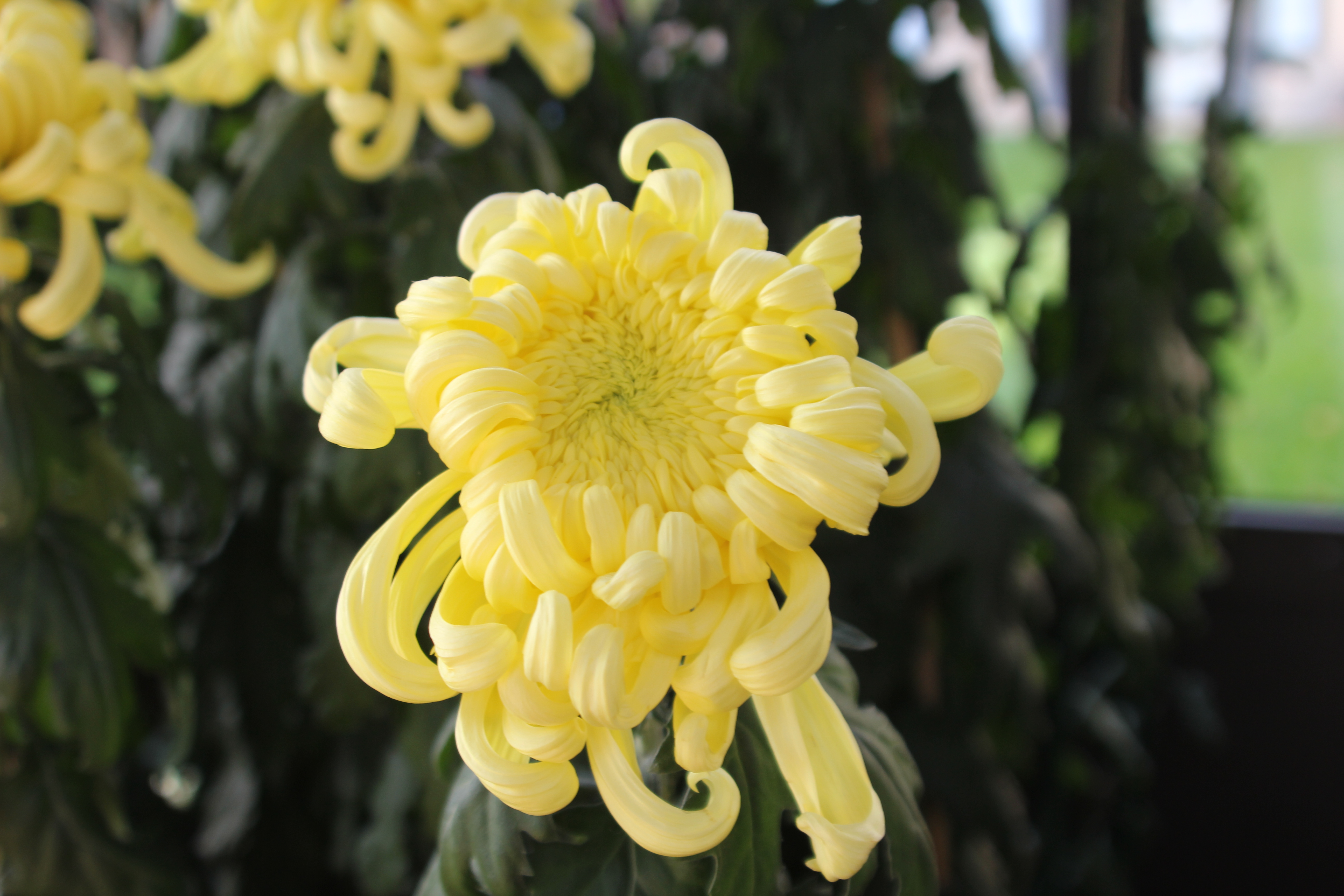
- Imperial Blossom — Around the 8th century A.D., the chrysanthemum appeared in Japan. So taken were the Japanese with this flower that they adopted a single flowered chrysanthemum as the crest and official seal of the Emperor. Japan also celebrate a National Chrysanthemum Day, called the Festival of Happiness.
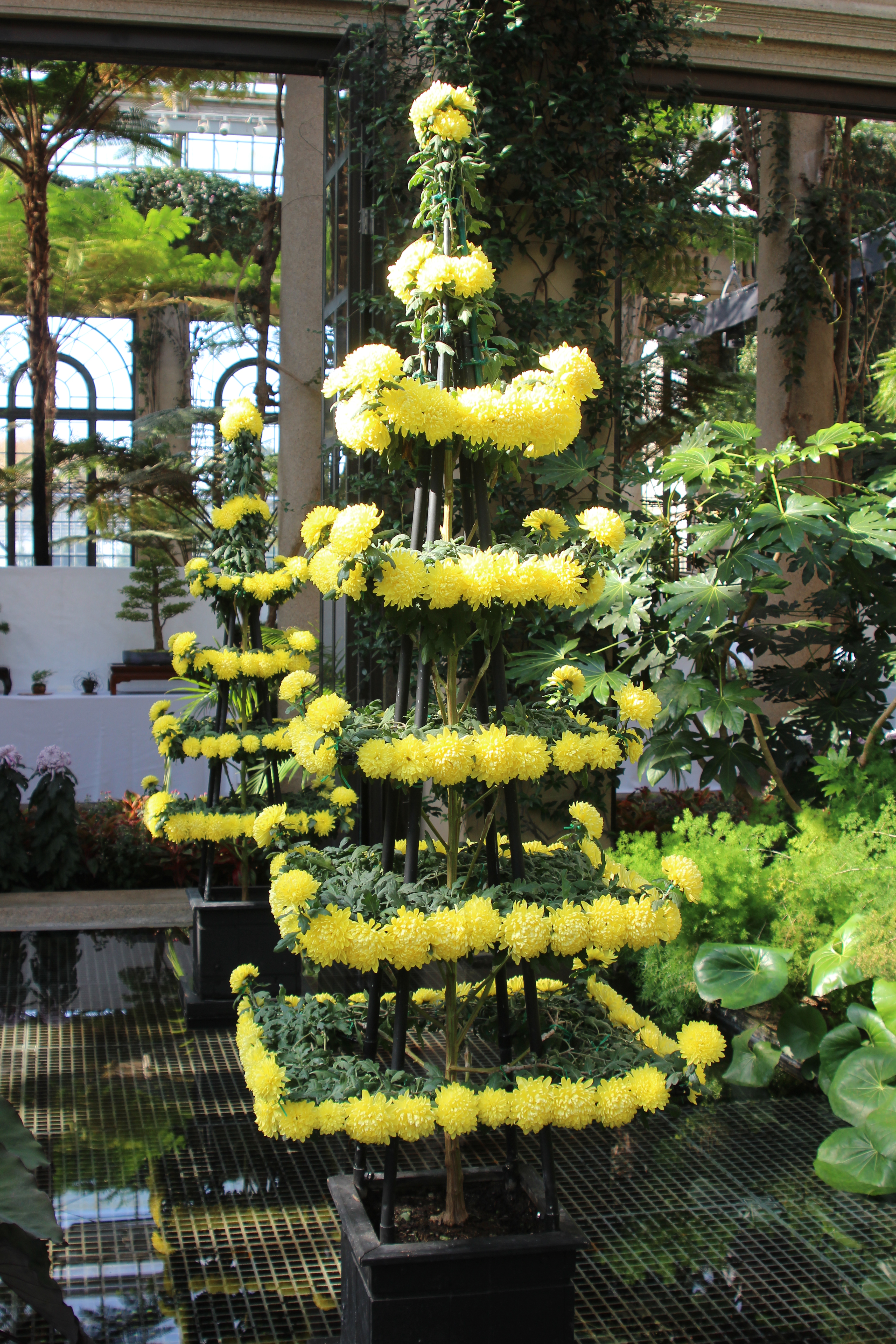
- Winning the West — The chrysanthemum was first introduced into the Western world during the 17th Century. In 1753 Karl Linnaeus, founder of modern taxonomy, combined the Greek words chrysos, meaning gold with anthemon, meaning flower. They belong to the Compositae, or daisy family.
- New Colors, Forms — In more recent times, growers within several countries began to propagate chrysanthemums. Hybridizers in England, France, Japan, and the United States have developed a wide range of floral colors, shapes, and sizes. Today’s colors include pink, purple, red, yellow, bronze, orange, white and bi-color variations.
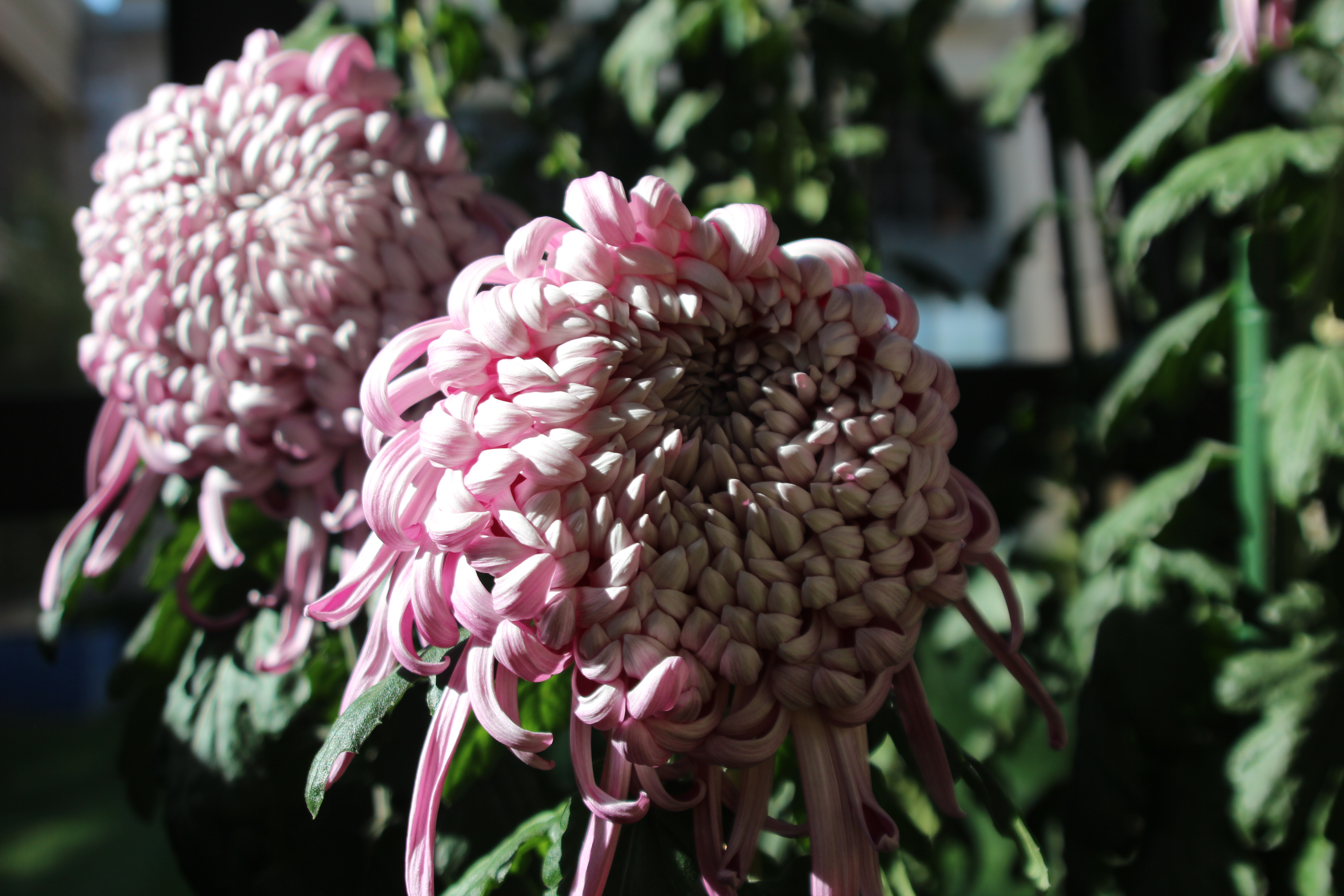
- Keeping Track — To help with identification, the National Chrysanthemum Society developed a classification system with 13 classes ranging from the large “football” mums to spider-shaped blooms to the classic potted mums. Some of these chrysanthemum cultivars can be trained into different forms as showcased at annual displays at Longwood Gardens, New York Botanical Garden and Bellingrath Gardens near Mobile, Al.
by GardenLover | Oct 23, 2014 | Favorite Flora
Wild for Species Tulips
By Teresa Woodard
Imagine an alpine meadow of dainty tulips in Kazakhstan or stout red tulips thriving on the rocky slopes of the Elburz Mountains in Iran. After seeing this collection of images from Tulips in the Wild, I decided to give these tough little beauties a try.
Last fall, I planted clusters of 8 to 10 Tulipa linifolia and Tulipa clusiana ‘Tubergen’s Gem’ along edges of our meadow. In April, they made a charming show with natural, wildflower-like blooms – much more fitting for the meadow setting than their larger, more showy hybridized cousins.
If you want to try planting some of these ‘wild’ or species tulip bulbs this fall, here are a few suggestions. Plan to order a larger quantity than expected, since the bulbs are smaller and look more impressive when planted in mass. Also, consider a location where these diminutive spring flowers will get noticed like a walkway, a mailbox garden or a border’s edge. The bulbs will grow best in a sunny location with good drainage, ideally a sloped area that is not irrigated. While deer are known to eat tulips just as they open, I was fortunate they didn’t find these blooms. However, be prepared to protect them with barrier plants or a deer repellent.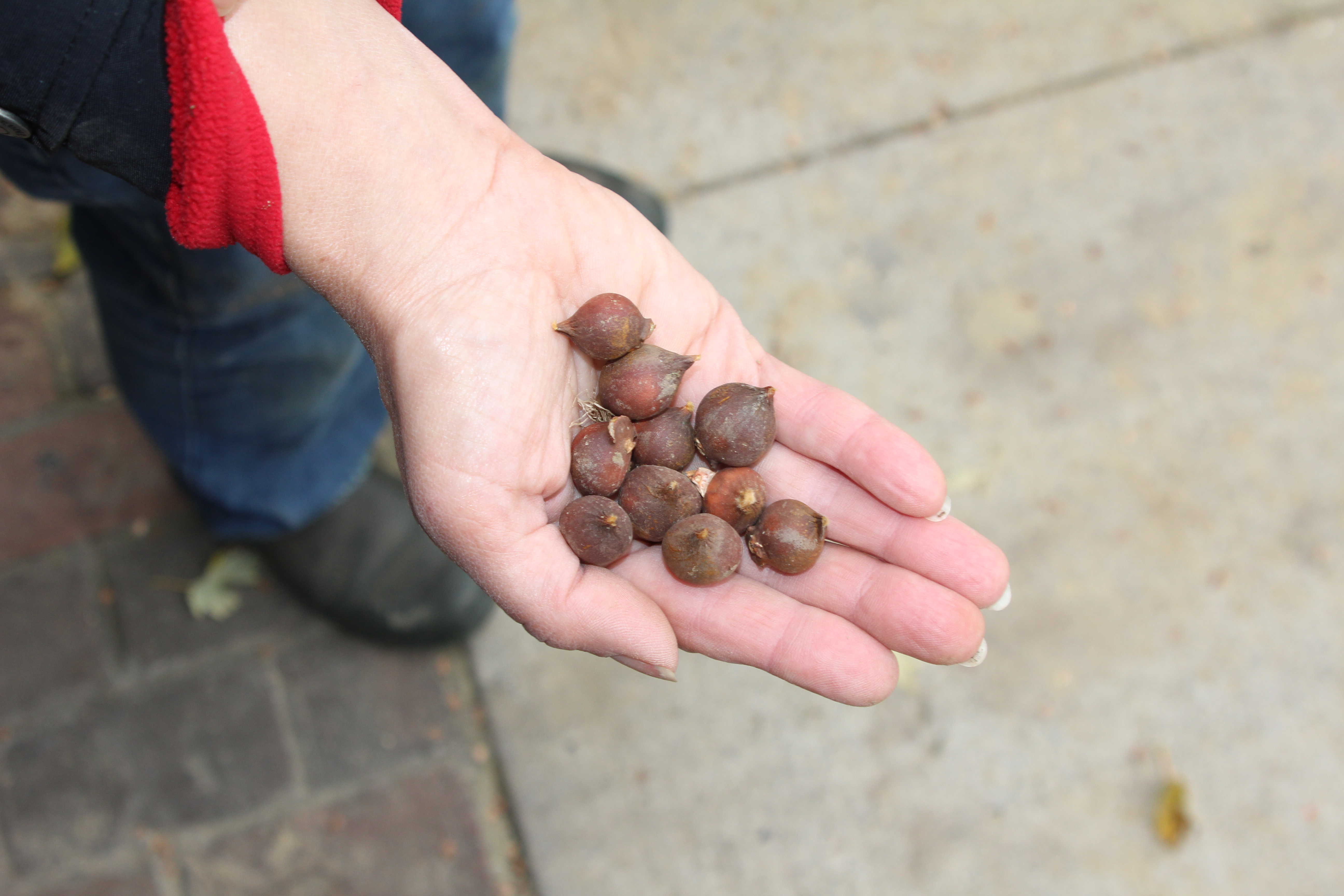
For bulb sources, check out Colorblends – 888-847-8637; Brett and Becky’s Bulbs — 877-661-2852; Van Engelen — 860-567-8734; and Bluestone Perennials — 800-852-5243.
by GardenLover | Aug 28, 2014 | Favorite Flora

Hibiscus ‘Robert Fleming’

Buds of Hibiscus ‘Robert Fleming’
Hardy Hibiscus for the Midwest
It’s hard to believe – a tropical-looking hibiscus with plate-size flowers is hardy for Midwest gardens! In fact, the showy flowers are now in bloom in area gardens. Heartland Gardening recently talked with Linda Johnson, co-owner of Scioto Gardens (a must-visit nursery and specialty plant supplier in Delaware, Ohio) about these crowd pleasers.
She recommends this group of perennials for great, mid- to late-summer WOW! She says the super-sized flowers come in a range of colors from pure white to pink to bright red. Plus, they’re deer resistant and tolerate wet soils. Even though some Hibiscus are tropical, there are many cultivars that are cold hardy in the Midwest. Two species are even native to Ohio.
Linda says the plants range in size from three to six feet tall. Most have green leaves, but some have purple or reddish foliage. They grow best in full sun with average to wet soil. The stems are somewhat woody and can be cut back in the fall after the plant is dormant. Linda suggests leaving a four- to six-inch stem to mark the late emerging plant’s location. Check out her favorites:
by GardenLover | Aug 17, 2014 | Favorite Flora

Aster Symphyotrichum Purple Dome
By Debra Knapke
Autumn is the time of golden, scarlet, and maroon leaves and shortened days. It is the time for picking apples and harvesting vegetables. We watch our gardens slowly decline, and yet there is one perennial that says “Wait, my time is now!” Enter the asters, the late summer to fall-blooming plants so loved by bees and butterflies.
We often overlook the flowers of autumn as we fill out our gardens with spring and summer blooms. Many of us buy plants in April, May and June when the spring and summer flowering plants proudly show their colors. But we overlook the asters which are just emerging: green leaves and no flowers.
Asters are not difficult to grow. Here are a few cultivation and maintenance guidelines:
- Asters prefer full sun, 6+ hours of light; most tolerate part sun, four to five hours of light.
- Most asters are drought-tolerant if you keep the soil moist during the first year in the garden.
- Asters love compost, but excessive fertilization will cause them to grow quickly and ungainly; an aster lying on the ground is not attractive!
- The taller asters should be cut back by 1/3 in early to mid-June to promote stronger stems and to avoid the need for staking.
- Asters are best divided in the spring.
It’s not too late to add these late bloomers to your garden, but don’t wait too long. After late August, asters may not have enough time to grow their roots into the soil and acclimate to your garden before winter arrives. If you miss the planting window this year, buy the green, leafy aster next spring.
Here are some species that are native to most of the Midwest. Many of the cultivars listed have been selected for their compact habits and richly colored flowers.

Aster Symphyotrichum Purple Dome
- Aromatic aster (Symphyotrichum oblongifolium) – has aromatic foliage; height 18-36”, width 12-18”; blooms Sept. to Oct.; sky blue to lavender-blue flowers; Look for: ‘October Skies’ (compact: ht. 18”); ‘Raydon’s Favorite’
- Blue wood aster (Symphyotrichum cordifolium) – height 2-4’, width 2-3’; performs best in part sun, but tolerates sun to shady conditions, blooms Aug. to Sept.; small light blue flowers
- Heath aster (Symphyotrichum ericoides) – height 1-2’, width 12-18”; blooms Aug. to Oct.; white to light pink flowers; look for ‘Pink Cloud’ ‘Snow Flurry’: both are more compact selections
- New England aster (Symphyotrichum novae-angliae) – height 3-6’, width 2-3’; blooms Sept. to October; light lavender or pink to deep purple or pink flowers; if the soils dries out, this species will lose the lower leaves on their stems; look for: ‘Purple Dome’ (compact: 24-30” tall) ‘Vibrant Dome’ (compact: 18-24” tall) ‘September Ruby’
- Smooth aster (Symphyotrichum laeve) – height 2-4’, width 18-24”; blooms Sept. to Oct.; striking blue-violet flowers; look for: ‘Bluebird’
- White wood aster (Eurybia divaricata) – the exception: prefers part sun to full shade; height 12”, width 18-24”; bloom Aug. to Sept.; white flowers; ‘Eastern Star’ is a more compact selection
Side Note: The Aster Name
Not only do our native asters suffer because they lack early flowers, but they have been separated into new genera with difficult names. One of my horticulturist friends calls it the “aster disaster”. If a garden center has arranged the perennials by their botanical names, the asters will be spread across several locations on the nursery shelves. Fortunately, in most garden centers, asters still hold a place at the beginning of the alphabet instead of being scattered throughout the benches. For those who are interested the new botanical names are listed with the common names.
by GardenLover | Aug 11, 2014 | Favorite Flora
Dry Shade? Don’t Despair – Plants that thrive under shade trees
By Debra Knapke
Dry Shade – words that strike fear in amateur as well as seasoned gardeners. Some gardeners camouflage these areas with nicely fluffed, dark-colored mulch. Others opt for the dry stream bed “look” which is achieved by spreading river stone of various sizes in an artful, river-like pattern.
Even though dry shade is a challenging site, it can be enhanced by using good garden practices that work in any garden situation. It all comes down to amending the soil, choosing your plants wisely and watering them to get them established in their first year.

A dry streambed in Debra’s garden with Allegheny spurge on the right. Notice the large silver maple trunk in the upper right. Tree roots are much more efficient at taking up water and nutrients than shrubs and perennials.
You’ve heard it before: amend the soil. This means incorporating organic matter in the form of leaf, mushroom or homemade compost into the existing soil. In open garden areas, you can till in organic matter without a thought to damaging existing roots. Under trees, a different technique is needed. As you plant, amend the pockets of soil that are between the roots and then cover the whole area with two to three inches of compost or hardwood mulch.
Many of the plants recommended for dry shade plants are tolerant of a wide range of garden situations. In loamy, evenly moist soils, many of these same plants can become aggressive; so, consider yourself forewarned. The below list is a sampling of plants. Don’t hesitate to ask for suggestions from personnel at your favorite garden
centers.
Shrubs
- Spicebush (Lindera) – native; edible berries
- Chokeberries (Aronia) – native; edible berries
- Oregon grapeholly (Berberis) – semi-evergreen
Herbaceous plants (perennials)
- Allegheny spurge (Pachysandra) – groundcover; initially a slow-grower, then takes off in third to fourth year
- Barrenworts (Epimedium) – flowers early in spring; beautiful leaves the rest of the season
- Bugleweed (Ajuga) – groundcover; look for the larger bronzy cultivar ‘Catlin’s Giant’ and the diminutive, maroon-leaved ‘Chocolate Chip’
- Hardy cyclamen (Cyclamen) – a tuber; slow to establish, but worth the wait; beautiful leaves in the winter; dormant in the summer
- Wood Ferns (Dryopteris) – once established are relatively drought tolerant
- Hellebores (Helleborus) – great winter effect; long bloom time; hardy self-seeder
- Crested iris (Iris) – native plant; slow spreader, but very cute!
- Jack-in-the-Pulpit (Arisaema) – native plant; a conversation starter in the spring garden
- Lilyturf (Liriope) – a vigorous and tenacious grass-look-alike groundcover
- Lily-of- the-Valley (Convallaria) – groundcover, fragrant flowers
- Robb’s euphorbia (Euphorbia) – another assertive and tenacious groundcover
A note on “establishing” your plants in their first year in your garden: A garden rule is that newly planted gardens should receive about one inch of water per week. A rain gauge can help keep track of the rain amounts in your yard. If Mother Nature sends less rain, get out your garden hose. Water your garden in the early morning as you drink your coffee or tea. And, it is better to water two to three times a week, deeply, rather than every day with a light sprinkle.
by GardenLover | Apr 2, 2014 | Favorite Flora
Wild ginger (Asarum canadense): Edible… or not?
 By Debra Knapke
By Debra Knapke
The question: “Is it true that you can use it like ginger?” The answer: “well, yes and no”. This shade-loving, native perennial has a history of culinary use as a ginger substitute. The roots have been powdered and candied, but the chemistry of wild ginger is different from the true ginger (Zingiber sp.) of South Asia. Wild ginger’s flavor has been described as potent, but Dr. Art Tucker, professor emeritus of Botany at Delaware State, cautions that only the essential oil, in small amounts, has GRAS (generally recognized as safe) status. This makes me reconsider my desire to taste-test the root.
The ethnobotanical record and current use for wild ginger reads like a manual in how to cure just about anything. The most common uses have included: improving digestion and appetite; curing coughs, colds, bronchitis, and sore throats, supporting the immune system and healing wounds. But, before you go experimenting, consider that most recommendations were accompanied by this caution: contains aristolochic acid which has been found to be carcinogenic and mutagenic – causing cancer and mutations, respectively.
In the garden, wild ginger is a beautiful ground cover that increases its diameter slowly; 24-30” wide in two to four years. The curious maroon flowers are under the leaves, close to the soil where they are pollinated by beetles and flies. Look for the flowers in mid-April or so. This may necessitate getting on your knees and bowing to your garden.
Wild ginger is native in 25 states in moist woodlands. In the garden this translates to well-amended soil in shade to part shade.  It is tolerant of a wide range of pH, and can withstand short periods of dryness once it is established. However, wild ginger is not tolerant of flooding. Slugs and snails can be an issue, especially in wet seasons, but I have found the damage to be minimal, certainly not worth any control measures.
It is tolerant of a wide range of pH, and can withstand short periods of dryness once it is established. However, wild ginger is not tolerant of flooding. Slugs and snails can be an issue, especially in wet seasons, but I have found the damage to be minimal, certainly not worth any control measures.
We all need to be aware of supporting our native insects. Wild ginger offers food to the larval stage of the gorgeous pipevine swallowtail butterfly. The caterpillar eats the leaves and thereby ingests aristolochic acid which makes it poisonous to birds. For this same reason, it is not favored by deer.

Mating pipevine swallowtails that are safe from hungry birds because of their diet of wild ginger leaves and milkweed nectar. Photo credit: Jim McCormick
Multi-functional, beautiful and low-care; what more can you ask from a plant?
To learn more about wild ginger and other rare plants, check out FloraQuest and consider signing up for the next field trip to Marblehead, Ohio, May 12-13.
 “If you would be happy for a lifetime, grow Chrysanthemums.” (A Chinese philosopher)
“If you would be happy for a lifetime, grow Chrysanthemums.” (A Chinese philosopher) The crown jewel of the display was the Thousand Bloom Mum—featuring more than 1,500 perfectly arranged flowers—the largest of its kind grown outside of Asia.
The crown jewel of the display was the Thousand Bloom Mum—featuring more than 1,500 perfectly arranged flowers—the largest of its kind grown outside of Asia.











 By Debra Knapke
By Debra Knapke

